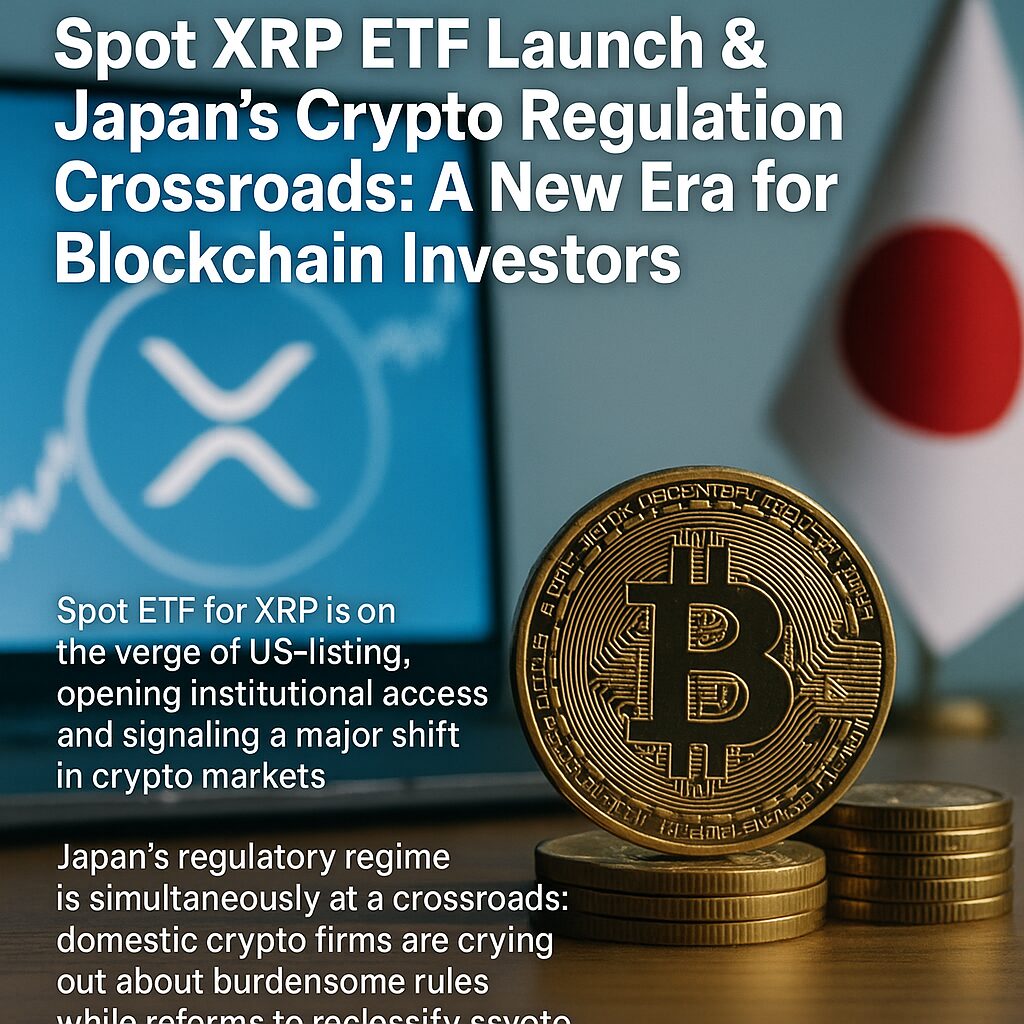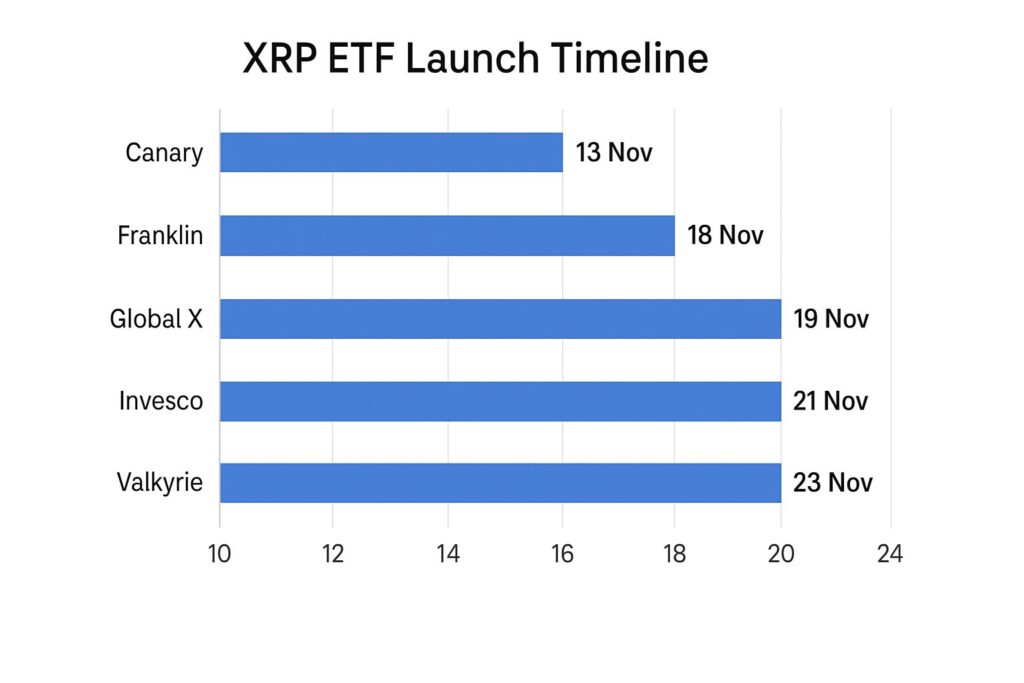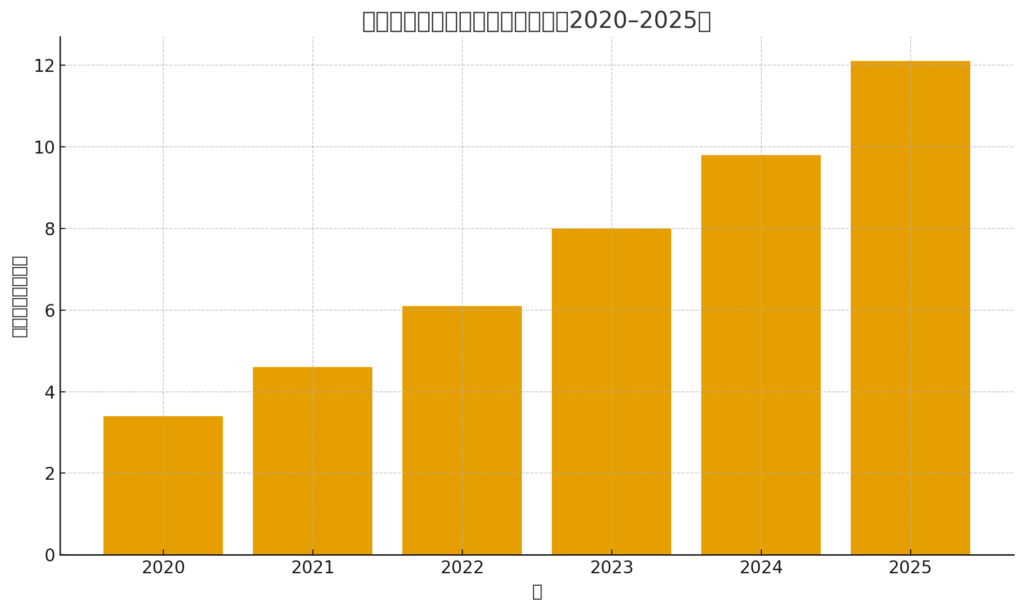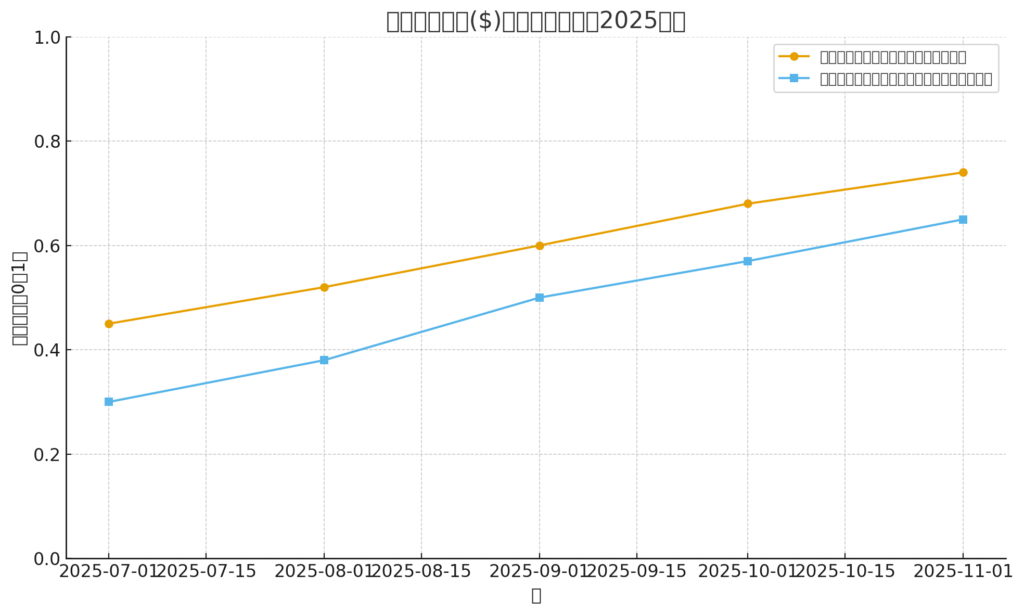
Main Points :
- Spot ETF for XRP is on the verge of US-listing, opening institutional access and signaling a major shift in crypto markets.
- Japan’s regulatory regime is simultaneously at a crossroads: domestic crypto firms are crying out about burdensome rules while reforms to reclassify crypto as financial products are being advanced.
- Bitcoin’s resurgence to around $105,500 is being driven by macro-factors including U.S. fiscal stimulus and political momentum, enhancing risk-asset appetite across blockchain markets.
- For blockchain practitioners and investors, this convergence of regulatory clarity, institutional access and macro tailwinds suggests a window of opportunity — but also heightened risk and need for careful execution.
- Practical implications include: new on-ramp mechanisms, token issuance platforms (for the user developing a wallet or token), and the importance of understanding regulatory interplay (especially for Asia-Pacific based projects).
1. Spot XRP ETF Poised for November Launch
Institutional Gateway to XRP Opens
After years of anticipation, the crypto-asset community is gearing up for what may be a watershed moment: the launch of the first spot ETF for XRP. According to recent filings and press coverage, one issuer, Canary Capital, has submitted a Form 8-A to the U.S. Securities and Exchange Commission (SEC) as of November 10, 2025, which is widely interpreted as the final procedural step before listing.
The ETF, with ticker “XRPC”, is set to list on the NASDAQ exchange, giving mainstream brokerage-investors regulated access to XRP via conventional securities vehicles.
Another outlet outlines the timeline: Canary’s listing on November 13; then issuers such as Franklin Templeton (November 18), 21Shares, Bitwise Asset Management and CoinShares between November 20-22; and finally giants such as Grayscale Investments and WisdomTree around November 25.
This matters for several reasons:
- The approval of a spot XRP ETF signals that XRP is now being viewed (or at least accepted) by major U.S. authorities as a sufficiently regulated asset for institutional flow. That’s especially significant given XRP’s litigation history with the SEC over whether it constitutes a security.
- For investors and projects, it means there is a fresh potential liquidity influx (from institutional money), which could drive token markets broadly (especially altcoins linked to payments, interoperability, or enterprise use-cases).
- For blockchain infrastructure players (wallets, custody, swap services, token issuers), this moment underscores the importance of being ETF-ready: regulated custodians, transparent pricing/indexing, settlement orchestration.
Recent market data supports the optimism: some reports show XRP pricing breaking key resistance ceilings ahead of the ETF launch, with one article showing an 11 % rise after ETF-filing signals.
That said, caution is warranted. Some analysts note that although clearing-and-settlement infrastructures (such as the Depository Trust & Clearing Corporation – DTCC) listings are live, that alone does not equal final SEC approval.
For the user building token/ wallet infrastructure, this means you should monitor not only the ETF filings themselves, but also the issuer setups (pricing index, custody, manager fee structure), as well as downstream impacts: will marketplaces integrate these ETF-accessible tokens? Will OTC desks increase exposure? Will new derivative flows (futures/options) expand?

2. Japan’s Crypto Environment: Innovation Under Constraint
Domestic Frustration and Reform Signals
While the U.S. opens its doors to new forms of crypto-access, the domestic landscape in Japan is showing signs of both strain and transition. On the one hand, Japanese crypto-asset service providers (VASPs) complain of “excessively heavy” regulatory burdens from the Financial Services Agency (FSA). According to industry commentary, registration reviews are lengthy, criteria non-public, and the cost/time burden threatens business viability.
On the other hand, regulatory reform signals are emerging:
- The number of crypto accounts in Japan surpassed 12 million as of February 2025, a 3.5× increase over five years, indicating strong retail interest.

- The FSA in September 2025 announced a proposal to bring crypto-assets under the country’s main securities law (Financial Instruments and Exchange Act – FIEA) rather than just the payment-services regime (PSA).
- Reuters recently reported the FSA is considering allowing banking-group subsidiaries to launch crypto-asset trading services (a major potential expansion of institutional access domestically).
In short: Japan is caught between two tensions: protecting consumers (and avoiding another major hack event – Japan was the epicentre of the Mt Gox collapse) and enabling innovation. The regulatory weight of asset‐segregation, AML/CFT, custodial rules, disclosure standards is high. Some in the industry say innovation is being stifled.
For example, the Payment Services Act (PSA) requires exchanges to register with the FSA, segregate customer assets from their own, keep a large portion in cold storage, and follow disclosure and AML/CFT procedures.
What does this mean for a token issuance/wallet project (like the user’s project)?
- If you are issuing tokens in Japan or targeting Japanese users, you must plan for compliance under the PSA and anticipate potential reclassification under FIEA.
- If you are building infrastructure (custody, wallet, swap) you should expect high regulation and high cost/time for approvals.
- Conversely, if reforms go through (allowing banking groups, more institutional access), you may see Japanese domestic adoption accelerate — meaning domestic UX and flows could matter more.
- Keeping an eye on regulatory harmonization (Japan aligning with global FATF, IOSCO standards) is vital for any cross‐border wallet/infrastructure project.
3. Bitcoin’s Surge to $105,500: Macro Meets Crypto
The Risk-Asset Appetite Returns
The crypto market is not moving in isolation. The resurgence of Bitcoin to about $105,500 (≈ ¥ or from where we derive the dollar figure) is fuelling broader sentiment. According to recent coverage, this rebound is underpinned by macroeconomic and political developments:
- A proposed new stimulus / direct-payment plan by former U.S. President Donald Trump has market watchers anticipating increased liquidity, which often supports risk assets such as crypto.
- The fact that U.S. government shutdown risk is receding (agencies expected to begin functioning again) improves risk sentiment and regulatory clarity prospects for crypto.
In my view, this means: if Bitcoin leads the volume, altcoins and blockchain infrastructure tokens (including XRP) are likely to enjoy spill-over effects. For example: once institutions are warming up to Bitcoin and equities, they may look for yield/alpha in less crowded assets — which could include alt tokens or tokenised infrastructure plays.

For our target audience (seeking new crypto assets, income streams, practical blockchain apps) this is meaningful because:
- A rising tide lifts many boats: if Bitcoin goes up, tokenised projects with solid fundamentals may capture upside.
- But risk is also magnified: higher correlation means systemic shocks (e.g., macro tightening, regulatory crackdown) may bite all crypto.
- Thus, being early in a niche (e.g., wallet for institutional clients, token issuance platform, interoperability network) could yield outsized returns if the macro & regulatory align.
4. Implications for Blockchain Practitioners & Innovators
From Strategic Planning to Tactical Execution
Pulling together the above trends, here are key take-aways for practitioners and investors who are actively building or seeking opportunities in crypto/blockchain:
A) Access and infrastructure
The spot XRP ETF launch means institutional flows will require: regulated custody, auditing, index pricing, compliance wraps. If you are building a wallet (as in your “dzilla Wallet” project) with swap functionality (BTC→ETH or vice versa) and plan to integrate layer-2 or multi-chain liquidity, then positioning your UX for institutional/custody grade flows is more important than ever. Consider features like:
- Transparent on-chain/off-chain reconciliation
- Custody segregation (cold/hot wallets, custodial insurance)
- Token vehicle compatibility (ERC-20, EVM chains, maybe even XRP Ledger SDK support)
- Audit trails for regulatory reporting
B) Token issuance and viral mechanics
Given your interest in token presale, no-code platforms (PinkSale, CoinList etc) and “viral” mechanisms (rewards, hashtag detection, social integration) — this regulatory/regime shift means you must evaluate:
- Is the token a “security” under jurisdictions you target? If Japan reclassifies crypto as financial products, tokens may face stricter rules.
- If institutional flows now start via ETFs, will your token benefit from secondary listings, or will you need to create programmable liquidity (AMMs, DEX, CEX) with regulatory-ready structures?
- Viral mechanics are a differentiator (social media, Discord, KOLs) — but regulatory risks increase if incentives equate to “investment contract” style offerings.
C) Geographic/regulatory arbitrage
Your focus on the Philippines (as you prepare the EMI, VASP, audit frameworks) and your Japan/US reading matter. Consider:
- Cross-border issuance: If institutional investors in US are accessing XRP via ETFs, could your token aim for a US-accessible vehicle? That invites US securities law concerns.
- Japan: if domestic reforms liberalise banking groups’ crypto activities, local partnerships may accelerate. But the compliance cost remains high.
- Philippines/Asia-Pacific: regulatory frameworks are often more permissive but increasingly aligned with global AML/CFT standards — so building robust compliance upfront (as you already are) is a competitive advantage.
D) Income-opportunity framing
For your audience (seeking new assets/income): the confluence of ETF access + macro tailwinds + regulatory transition means:
- Consider exposure to tokens that are “ETF-adjacent” (i.e., tokens that could be next to get institutional access). XRP is one; what about others in infrastructure (layer 1, layer 2, interoperability)?
- Tokens that provide yield (staking, liquidity-pool incentives) may benefit as institutions seek yield beyond passive holding.
- Projects that facilitate real-world use-cases (payments, remittance, wallets) may gain the spotlight as crypto comes more into mainstream finance.
5. Risks and Things to Monitor
Guardrails for a Rising Tide
While the outlook is compelling, several risk factors merit close attention:
- Regulatory surprises: Although approval signals are strong for the XRP ETF, final SEC sign-off is not yet guaranteed — as one analysis points out, operational registration (DTCC listings) ≠ approval.
- Over-optimistic price expectations: Some analysts project rallies to $10-$20 for XRP under “extreme bullish” conditions. But token markets remain highly volatile and correlation risk is high.
- Macro headwinds: If liquidity tightens, interest rates climb or risk-asset sentiment reverses (e.g., due to geopolitical shock), all crypto could be hit.
- Japan’s regulatory drag: For Japan-focused infrastructure, if reforms get delayed or enforcement tightens, domestic business models may suffer.
- Execution risk for projects: As infrastructure demands increase (custody, audits, compliance), many startups may struggle to scale or maintain transparency — quality will matter.
6. Conclusion
A New Chapter for Crypto — Seize with Caution
We are at a defining moment for the crypto ecosystem: the potential debut of a spot XRP ETF in the US marks a step toward mainstream institutional integration. At the same time, Japan is undergoing regulatory transformation — offering both pressure and opportunity for blockchain operators. Coupled with macro tailwinds driving renewed risk-asset appetite (as seen with Bitcoin’s surge around $105,500), this convergence creates fertile ground for action.
For the reader interested in new crypto assets, income opportunities and practical blockchain applications: now is a time to strategically position — not just speculate. The winners will likely be those who combine technical excellence (wallets, swaps, token issuance platforms), regulatory readiness (compliance, audit, custody), and product-market fit (social/viral mechanics, real-world utility). The regulatory gatekeepers are opening — but the standards are rising.
In short: be early, but be prepared. Build for durability, not just hype. The market is evolving from “wild west” to “regulated frontier” — and the projects that understand and operate in that nuance will capture the next wave of crypto 2.0.

